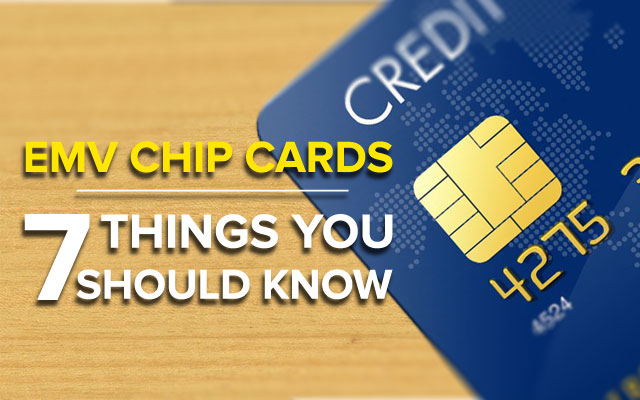EMV Chip Cards
EMV chip cards are now being issued on a regular basis. If you have not received an updated debit or credit card with an EMV chip you can expect to receive one soon. Each day more and more EMV cards enter the market and the likelihood of your organization needing to accept these cards for payment increases. In October of this year major card issuers will be shifting the liability of fraud to the party who is least capable of supporting an EMV transaction. To get you up to speed on how that might affect you, we have put together a list of seven things you need to know as this new technology becomes standard.
EMV Chip Cards-The Facts
1. EMV is a Set of Standards
EMV refers to the standards created by Europay, Mastercard and Visa that dictate how chip based debit and credit cards must work. These standards are behind the scenes details for how transaction data moves and is secured from fraud.
2. EMV is More Secure
EMV chip cards are not the end all be all of security for making payments, but they are a good step in the right direction. The microchips present in cards contain much more information to validate accounts and authorize payments – this technology and additional information makes it harder for criminals to take advantage of stolen card data.
3. We Are Jumping on the Bandwagon
While chip cards are just now being implemented across the United States they have been the norm in the rest of the world for quite some time. Implementing chip card technology here in the US means you can use your cards easily when you travel internationally and it also allows foreigners to use their cards here.
4. EMV Does Not Impact Online Transactions
The microchips are a physical part of your card and helps protect transactions when a card is physically present and used for payment. When purchases are made online the card is not physically used to submit a payment and EMV will not help validate these transactions.
5. EMV Will Shift Liability for Fraudulent Transactions – This May Affect You
In an effort to speed up the adoption of this new standard here in the US the card brands have chosen to implement a liability shift. This liability shift occurs on October 1st 2015 at which point the organization least capable of supporting an EMV transaction inherits the liability for fraud that may take place.

6. Not Everyone Will Support EMV Transactions Immediately
Though the liability shift takes place in October 2015 many organizations may choose to wait before they upgrade their payment terminals or point of sale devices. Most organizations are looking at the amount of fraud they have exposure to and calculating whether the financial impact is greater to inherit the fraud or to pay for new equipment.
For nonprofit organizations it is likely they have little to no fraud taking place. Many of these organizations are opting to wait until new equipment is necessary for other reasons at which point they intend to buy EMV enabled equipment.
7. New Equipment for Accepting EMV is Available Now
For organizations that anticipate fraud or want to upgrade for other reasons there is equipment available now that will enable EMV acceptance. We have two options for new terminals that are capable of accepting EMV transactions.
EMV Chip Card-Terminals
The Verifone Vx520 terminal is available in two models – a contact only terminal for $399 and a terminal that also accepts contactless payments for $549. Both terminals can process transactions over an analog phone line or Ethernet. For organizations that want to offer ApplePay and other contactless payments the contactless terminal is the purchase to make.
Now that you know the basics about EMV chip cards you can make an informed decision about how your organization should respond. If you have any further questions or would like to upgrade your terminal(s) let us know.

